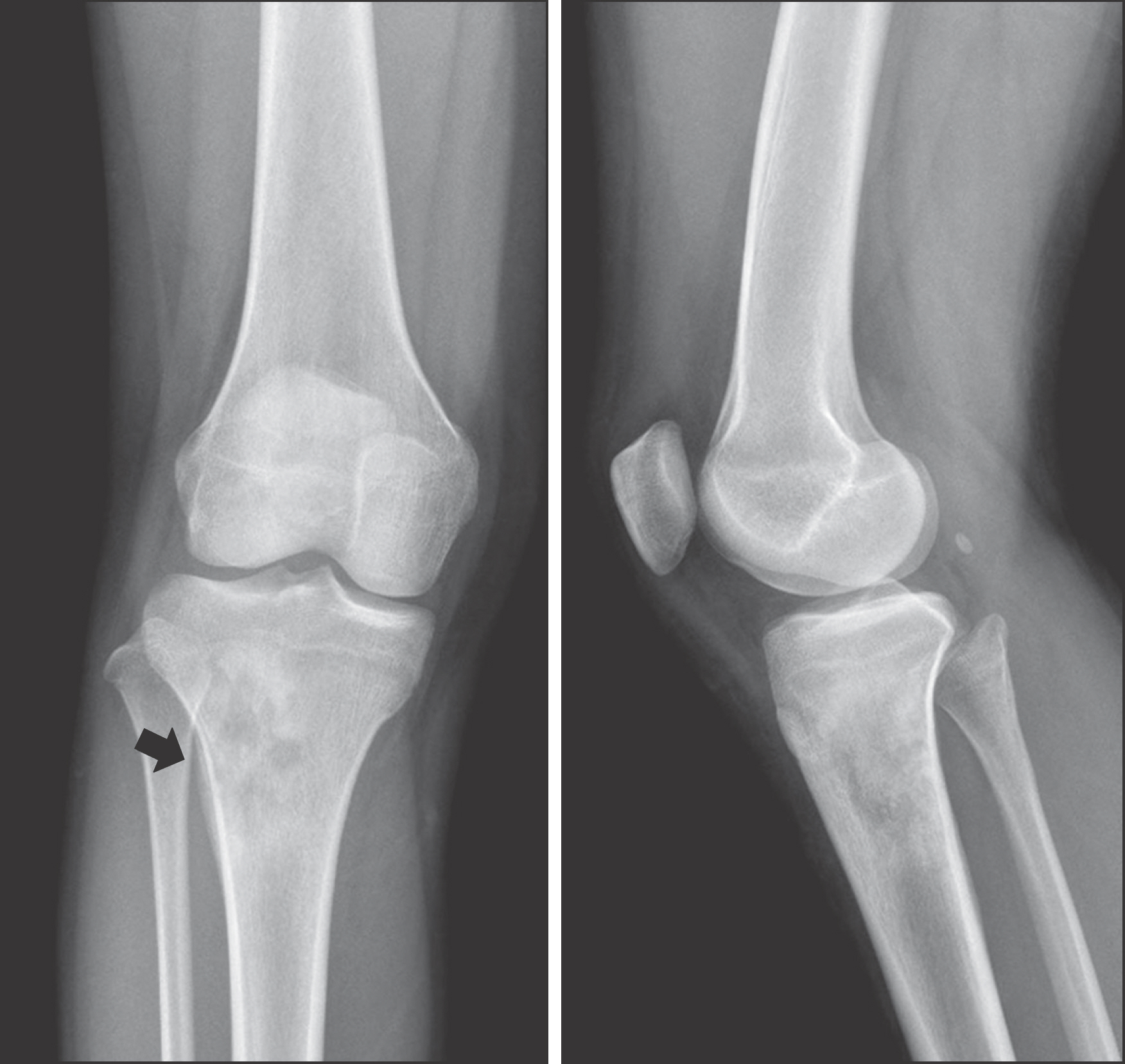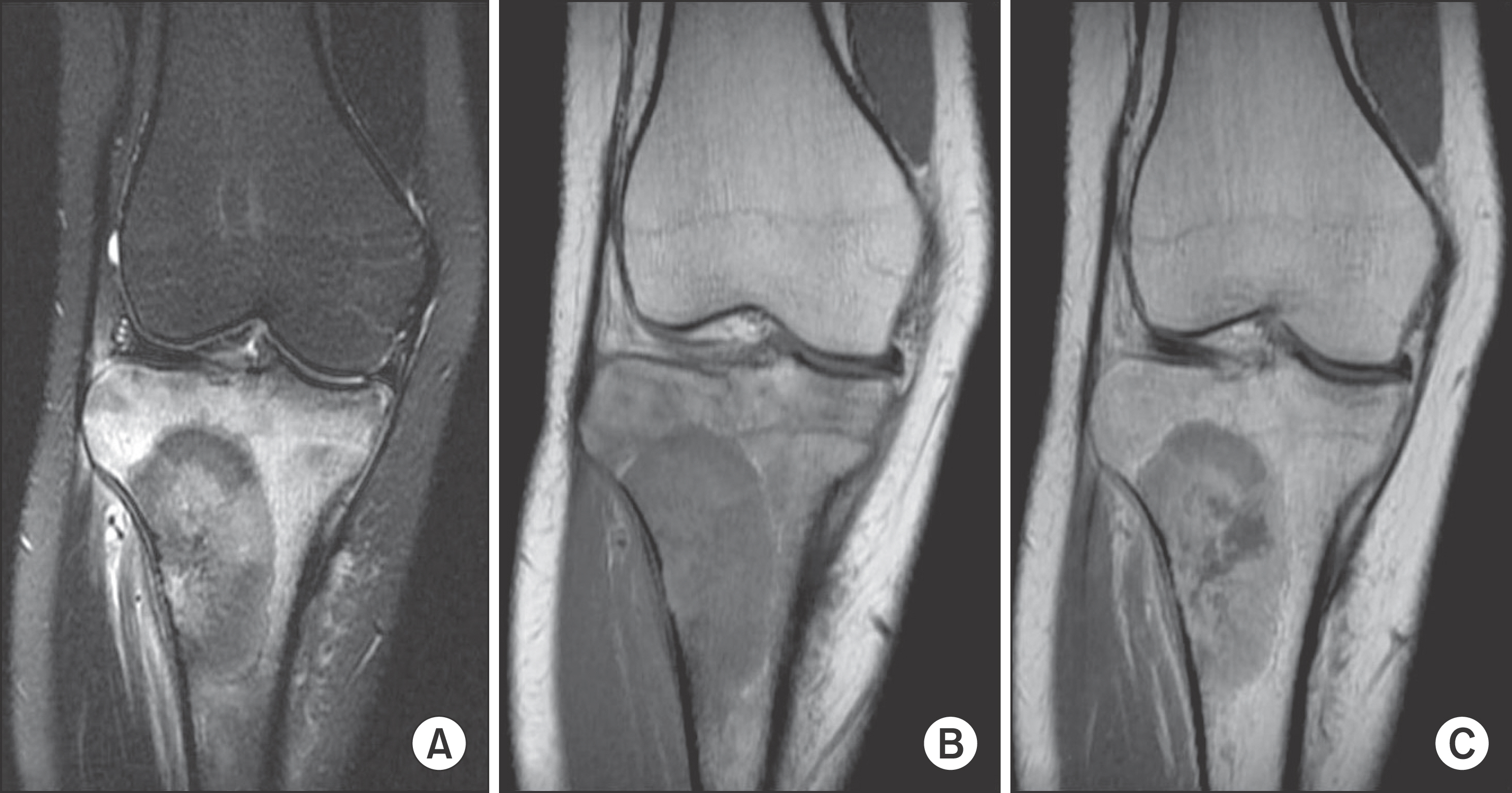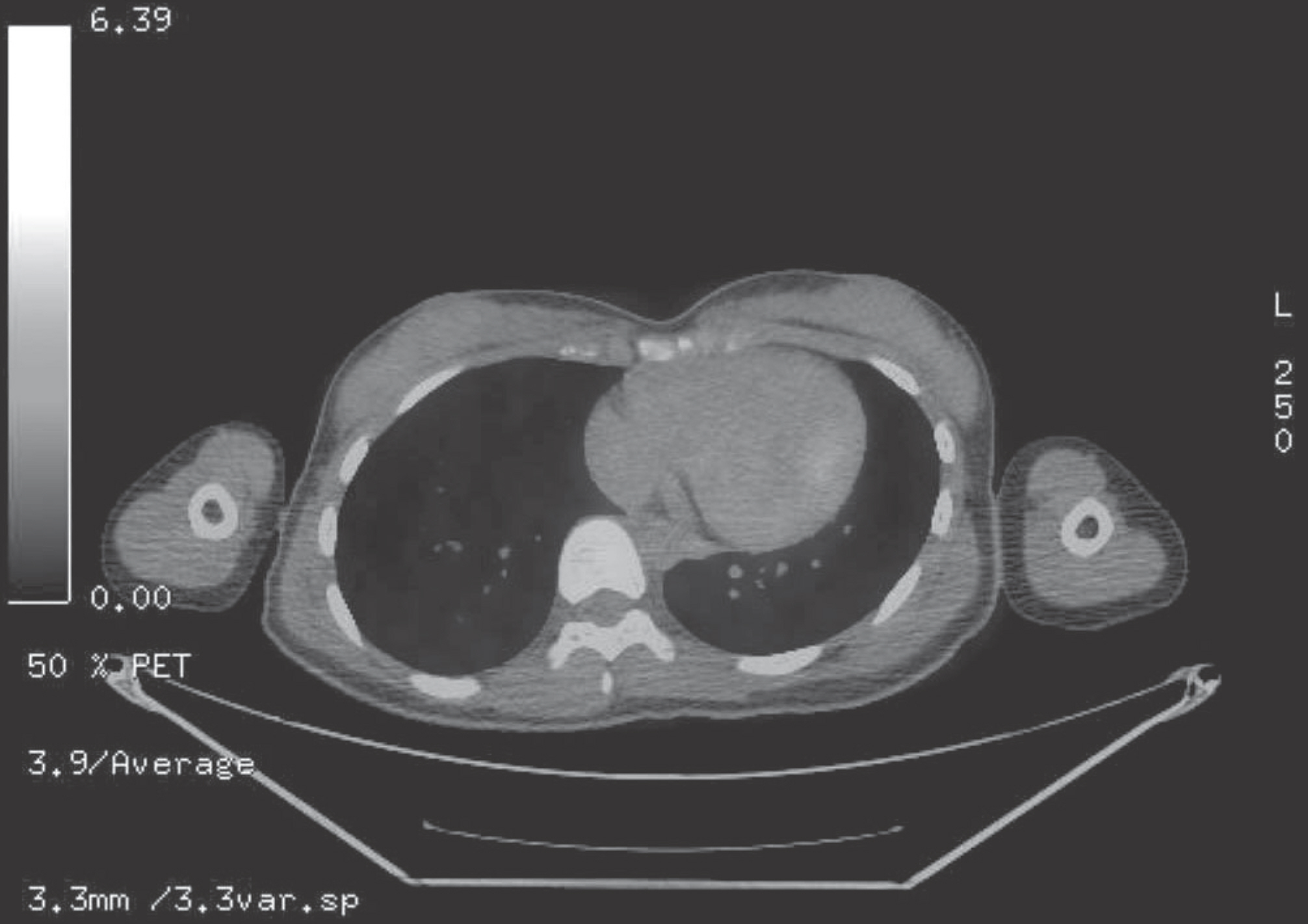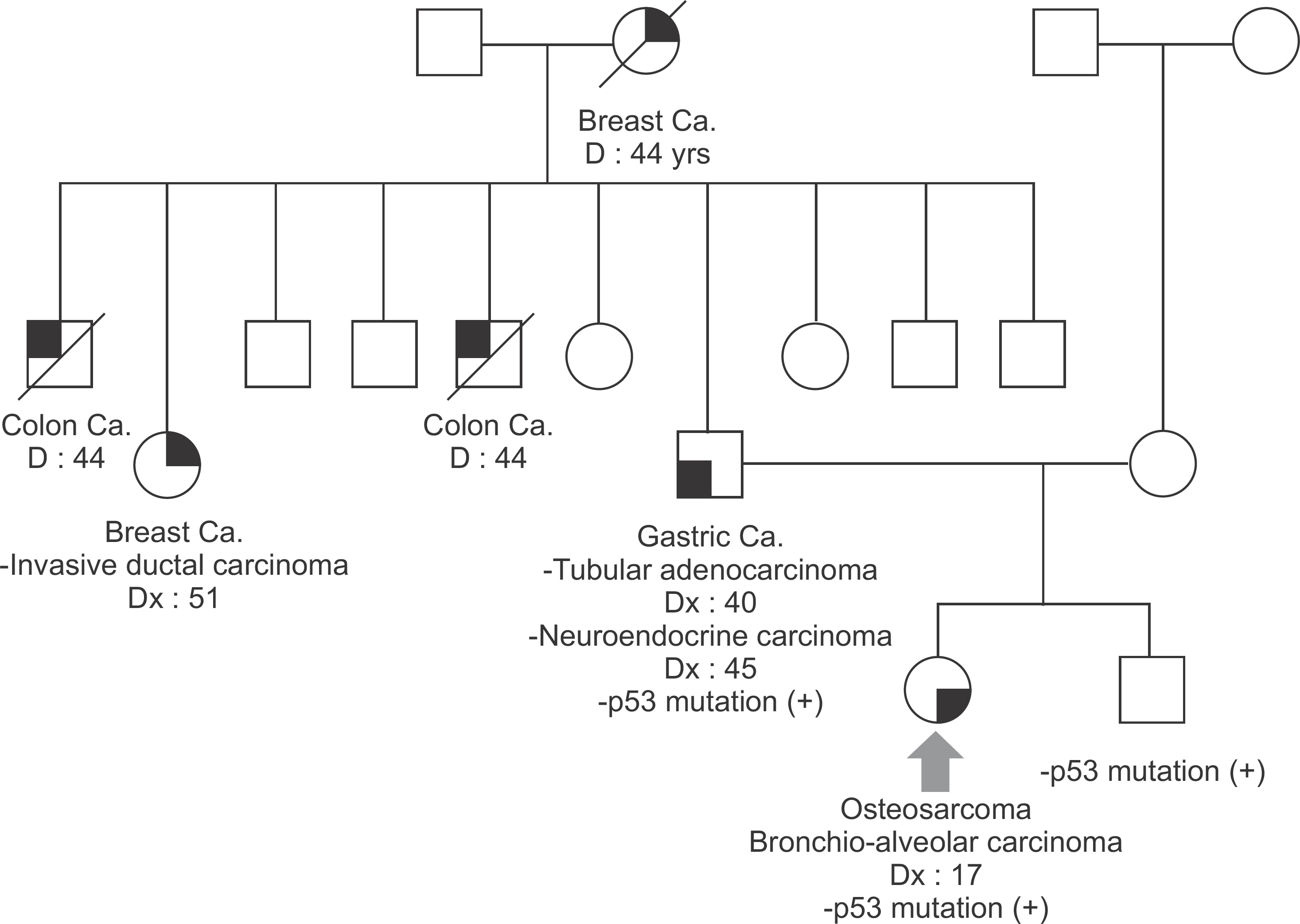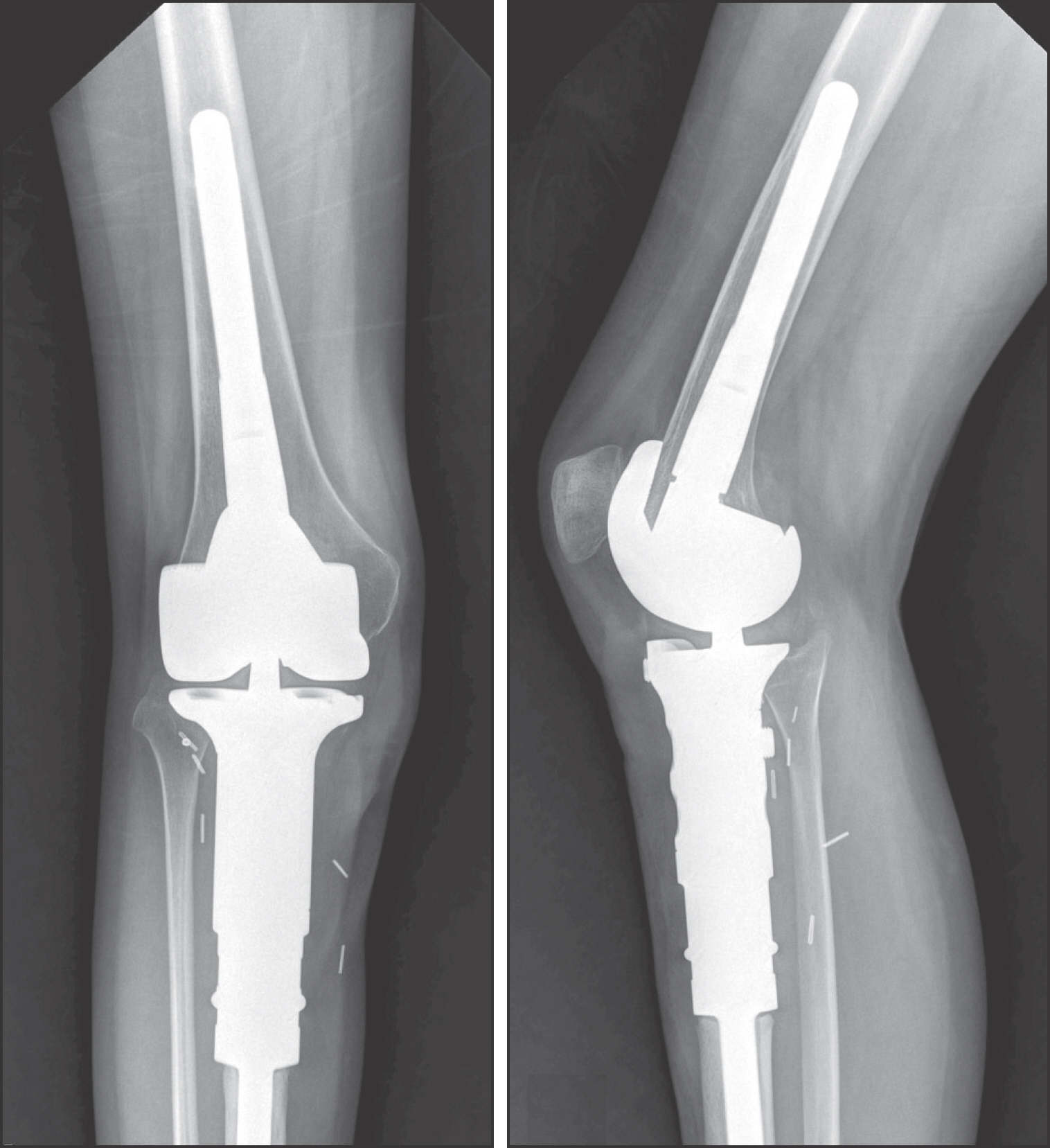J Korean Bone Joint Tumor Soc.
2014 Dec;20(2):99-103. 10.5292/jkbjts.2014.20.2.99.
Osteosarcoma with Adenocarcinoma of Lung in Li-Fraumeni Syndrome: A Case Report
- Affiliations
-
- 1Department of Orthopedic Surgery, Chonnam National University Hospital, Gwangju, Korea. stjung@jnu.ac.kr
- 2Department of Orthopedic Surgery, Dong-A Hospital, Gwangju, Korea.
- KMID: 1799901
- DOI: http://doi.org/10.5292/jkbjts.2014.20.2.99
Abstract
- Li-Fraumeni syndrome (LFS) is an autosomal dominant hereditary disorder characterised by a variety of different tumor types in children and young adults. That contains with a germline mutation in the tumor suppressor gene Tumor Protein p53 (TP53). That is extremely rare. Furthermore, this is sometimes overlooked. Here, we report a case of LFS which was confirmed by mutational analysis of the p53 gene. Also, literature review is intended to improve understanding of this disease entity.
MeSH Terms
Figure
Reference
-
References
1. Chompret A, Brugières L, Ronsin M, et al. P53 germline mutations in childhood cancers and cancer risk for carrier individuals. Br J Cancer. 2000; 82:1932–7.2. Li FP, Fraumeni JF Jr. Prospective study of a family cancer syndrome. JAMA. 1982; 247:2692–4.
Article3. Hisada M, Garber JE, Fung CY, Fraumeni JF Jr, Li FP. Multiple primary cancers in families with Li-Fraumeni syndrome. J Natl Cancer Inst. 1998; 90:606–11.
Article4. Li FP, Fraumeni JF Jr, Mulvihill JJ, et al. A cancer family syndrome in twenty-four kindreds. Cancer Res. 1988; 48:5358–62.5. American Society of Clinical Oncology. American Society of Clinical Oncology policy statement update: genetic testing for cancer susceptibility. J Clin Oncol. 2003; 21:2397–406.6. Speicher MR, Carter NP. The new cytogenetics: blurring the boundaries with molecular biology. Nat Rev Genet. 2005; 6:782–92.
Article7. Birch JM, Hartley AL, Tricker KJ, et al. Prevalence and diversity of constitutional mutations in the p53 gene among 21 Li-Fraumeni families. Cancer Res. 1994; 54:1298–304.8. Eeles RA. Germline mutations in the TP53 gene. Cancer Surv. 1995; 25:101–24.9. Leroy K, Haioun C, Lepage E, et al. Groupe d'Etude des Lym-phomes de l'Adulte. p53 gene mutations are associated with poor survival in low and low-intermediate risk diffuse large B-cell lymphomas. Ann Oncol. 2002; 13:1108–15.
Article10. Berns EM, Foekens JA, Vossen R, et al. Complete sequencing of TP53 predicts poor response to systemic therapy of advanced breast cancer. Cancer Res. 2000; 60:2155–62.
- Full Text Links
- Actions
-
Cited
- CITED
-
- Close
- Share
- Similar articles
-
- Breast Cancer after Radiation Therapy in a Patient with Li-Fraumeni Syndrome: A Case Report
- Osteosarcoma: Biologic Markers in Its Treatment
- The first documentation of Li-Fraumeni syndrome in Korea
- Li-Fraumeni Syndrome : Current Strategies and Future Perspectives
- Family of Li-Fraumeni Syndrome with a Germline Mutation in the p53 Gene

